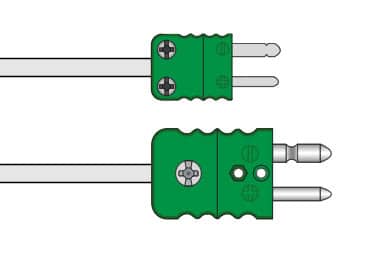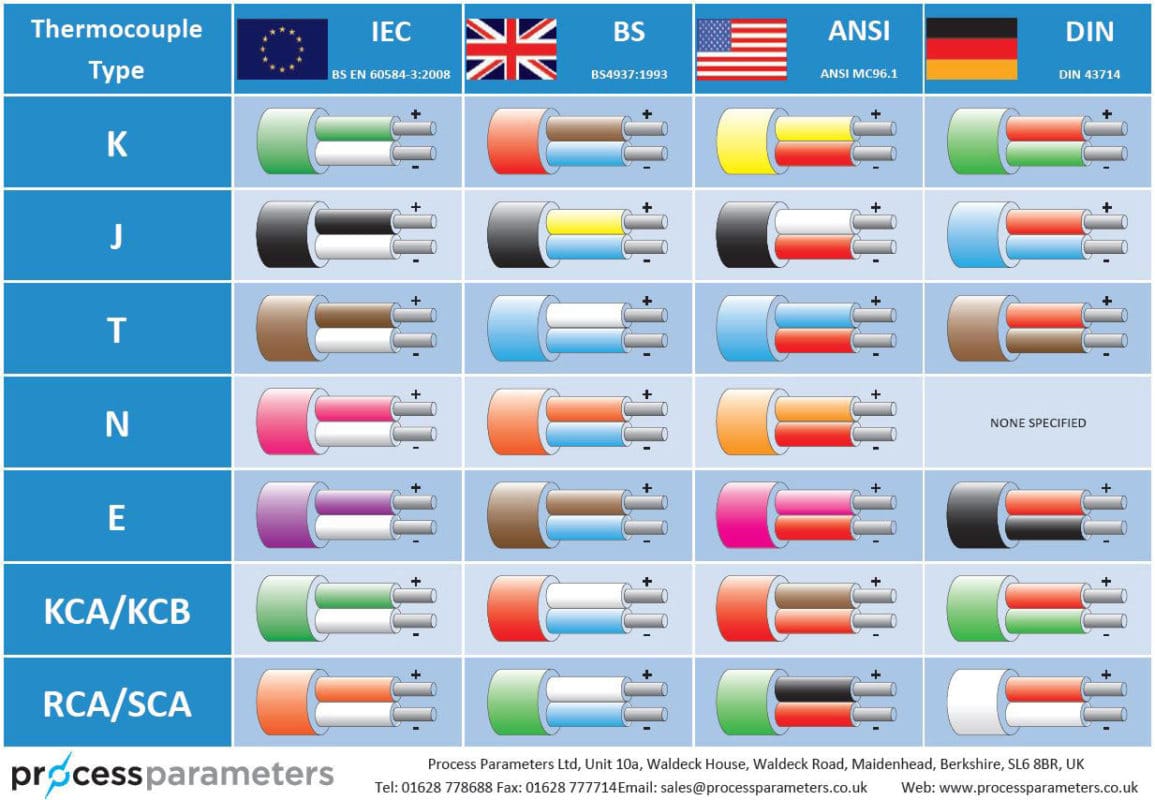Thermocouple Wire Colour Code
Thermocouples of all different types have their own colour coding to aid identification however this is not necessarily as easy as it may seem. As well as each thermocouple type having its own colour code, there are various national and international standards each having their own colour code system. It is important to positively identify which standard is being used before you can identify the thermocouple type. Don’t worry though, we are always here to help you.
The primary standard used within the UK and Europe is often referred to simply as the IEC colour code. Strictly speaking this is a little vague as this refers to the IEC standard IEC584 and more specifically IEC584-3. This is now an old standard and the current standard used within the UK and Europe is BS EN 60584 and the part of this standard which deals with colour codes is BS EN60584-3:2008.
Other countries outside of Europe have their own standards and on occasion, these find there way into the UK market. The most notable is the American ANSI colour coding with comply with the specification ANSI MC96.1.
Other colour codes which are now officially obsolete but may still be used, particularly on older machinery, are the old British Standard colour code which complied with BS1843:1952 and BS4937:1993 also the German DIN colour codes which complied with DIN 43714.
Other countries to have their own standards include Japan and France but these are rarely seen if ever.

Thermocouple diagram to aid identification

